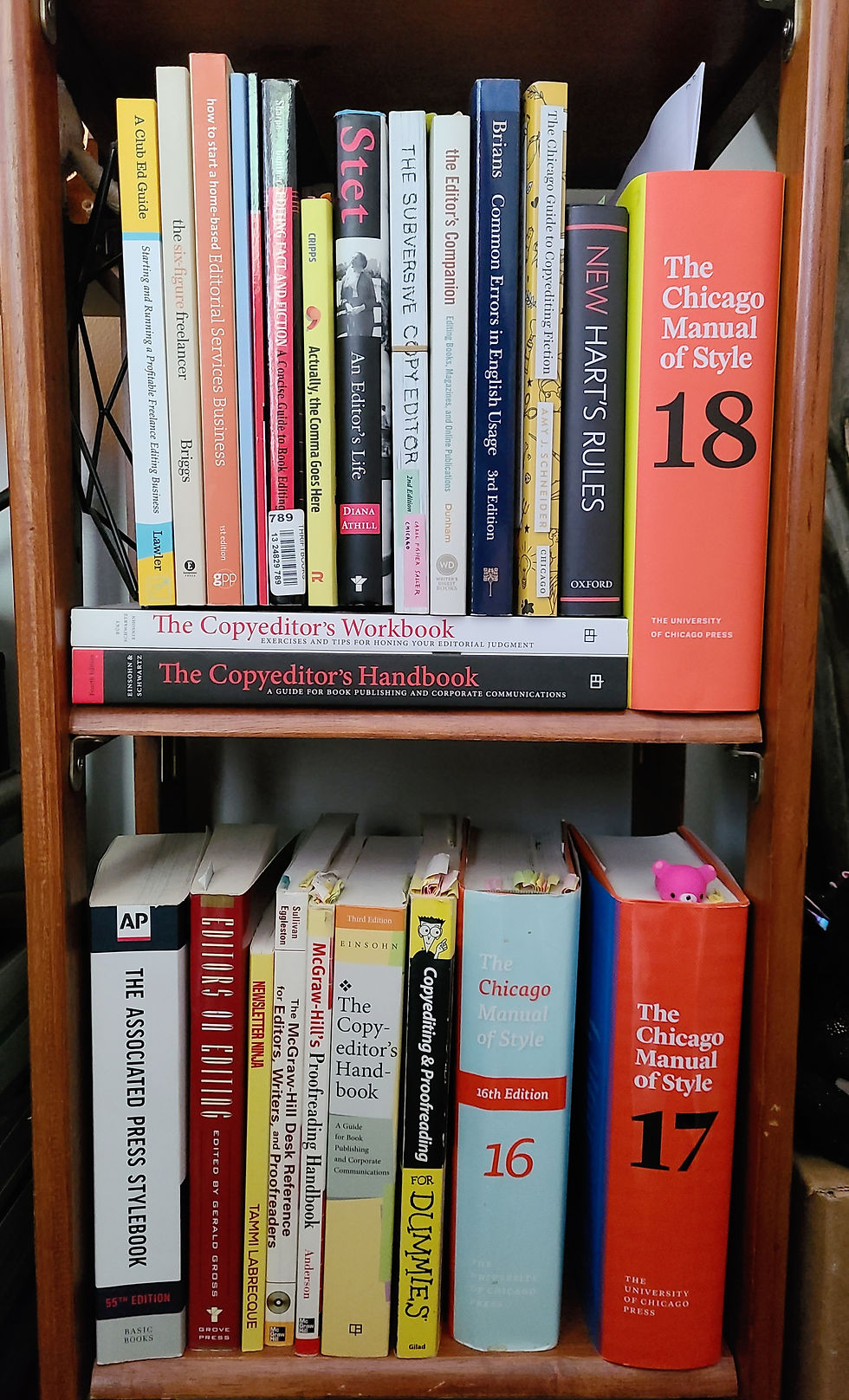Style sheets: What are they, and do I need one?
- Erika M. Weinert

- Dec 1, 2021
- 4 min read
Updated: Nov 11
Style sheets are miniaturized versions of style guides, and yes, you need one. That doesn’t mean you need to make one yourself, though. Most professional editors create style sheets for their clients, and I am no exception.
If you’re a first-time author, let’s cover the basics. You may be asking yourself, “What is a style guide?” In high school or college, you probably heard mention of MLA format. It's a style of writing geared more toward academics, not manuscripts. The Chicago Manual of Style (CMOS) is the style guide that book editors reference while they work through manuscripts. It is nearly impossible to memorize style guides cover to cover, so my physical copy of CMOS is within reach while I’m working away at my desk.

All-inclusive rules for punctuation can be found in The Chicago Manual of Style, including pages upon pages of comma usage. Ever wonder what a semicolon (;) is used for? It’s in there, too, along with rules on capitalization and when one should and should not spell out numbers. There’s also an entire section on manuscript preparation, editing, and proofreading.
The formatting of style sheets, on the other hand, varies from editor to editor. The style sheet I use is a compilation of a few I found online, and I've since made it my own.
This style sheet is in MS Word format, so feel free to download it. It's a great way to keep all information about your book in one place for easy reference.
At the top of my style sheet's first page is Book Title, Series Title (if applicable), Author, etc.
The first section on my style sheet is Language & Style:
This manuscript has been line edited with the following resources:
Chicago Manual of Style, 18th Edition
Merriam-Webster Collegiate Dictionary Online
Any style preferences specified by the author or editor have been outlined in the following guide. The manuscript has been edited following American English guidelines.
The Chicago Guide to Copyediting Fiction, Amy J. Schneider
Next, I list Punctuation & Grammar:
The following rules have been applied to the manuscript:
Serial (Oxford) comma
Thoughts are italicized. (No quotation marks around thoughts—only italics.)
Em dashes have no spaces on each side per Chicago Manual of Style, 18th Edition (—)
When a name ends in “s” and is being treated as possessive, add ’s: Yates’s (as seen on page 21) [This is highlighted on the style sheet template as a call to action because it is subject to change based on author preference.]
Comma before and/or after the word too. For instance, on page 22, “They serve brunch, too.” [This is highlighted on the style sheet template as a call to action because it is subject to change based on author preference.]
I provide an inventory of characters, listing their features, if applicable; places; timeline; and world terms, if applicable. There is also a comprehensive Spelling & Capitalization list in the form of a table, beginning with numbers.
Listed beneath Numbers are spelling preferences in alphabetical order. If I notice that my client uses "alright" instead of "all right" in most instances, this preference gets listed in the table. The same can be said of words such as
ambiance vs. ambience
moulding vs. molding
grey vs. gray
blonde vs. blond
décor vs. decor
glamour vs. glamor
and so on.
And, yes, some expletives are listed as well, such as shitload, which, according to Merriam-Webster, is one word.
Yep! Shitload is in the dictionary!
A style sheet will stay with a manuscript throughout its lifecycle, from editor to author, and from author to the next editor, and then to the proofreader. (Your proofreader, if you elect to hire one, will definitely need the style sheet.) Continuity is a key element in the publishing world. We don’t want our readers seeing shitload and grey on page 51 and shit load and gray on page 92.
These types of mistakes found in print scream amateur, and no author wants that.
Next time you’re in the market for a professional editor, make sure to ask if they create a style sheet for each manuscript they edit. If they don't, you may want to keep looking.
Are you a first-time author who struggles with understanding the book editing process?
Gain a clear understanding from a professional editor by reading my July 2024 blog post titled "Don't Be Fooled: The 4 Stages of the Book Editing Process."





Comments